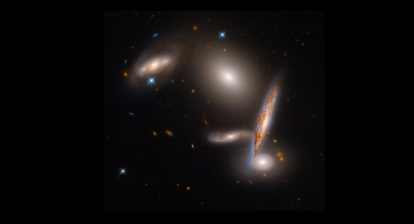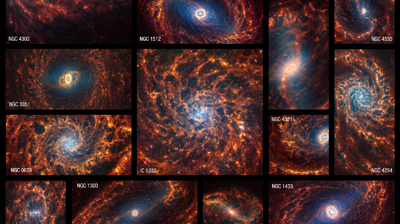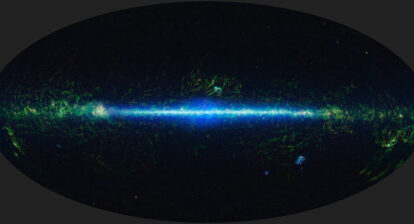This is so amazing! Scientists figured out when the first stars in the Universe were born. A new study analyzed images of six of the most distant galaxies using the Hubble and Spitzer Space Telescopes. The galaxies were so far away that they appeared pixelated to even the most powerful telescopes on Earth. The researchers used the images to calculate the age of these galaxies as ranging from 200 to 300 million years, which they did by calculating the number of hydrogen atoms in the atmosphere of their stars – older stars have more hydrogen atoms. This then provided an estimate of when their stars first formed.
The researchers also used the Atacama Large Millimetre Array (Alma), the Very Large Telescope (VLT) and the Gemini South Telescope (all in Chile) and the twin Keck telescopes in Hawaii to estimate the distance of the galaxies. This confirmed that the galaxies existed when the Universe was only 550 million years old. All of this data combined helped them to calculate when the first stars were born. The researchers suggest that this period, known as the “cosmic dawn”, occurred between 250 to 350 million years after the Big Bang – indicating the time the first stars came into being.
We already know that the Universe first emerged 13.8 billion years ago as a result of the Big Bang. After this initial flash there was a period known as the cosmic dark ages. This new study now establishes that 250 to 350 million years after the Big Bang, the first stars appeared, lighting up the cosmos in a “dawn”. These first stars were massive, primarily burned only hydrogen and then went on to create the next generation of stars that eventually created heavier elements. We already know that every element heavier than hydrogen, helium and lithium is created inside end-of-life stellar explosions. The good news is that NASA’s James Webb Telescope, expected to be launched later in 2021, will be strong enough to observe these early galaxies and their stars.
Video Explanation: The video shows the formation and evolution of the first stars and galaxies in a virtual universe similar to our own. The simulation begins just before cosmic dawn, when the universe is devoid of starlight, and runs to the epoch 550 million years after the Big Bang when the six galaxies analyzed by Dr Laporte and colleagues are being observed. The age of the universe in millions of years is shown in the upper left. The inset focuses on the evolution of a galaxy similar to those in the recent observational study. Purple regions display the filamentary distribution of gas, composed mostly of hydrogen. White regions represent starlight and the yellow regions depict energetic radiation from the most massive stars which is capable of ionizing the surrounding hydrogen gas. As massive stars rapidly reach the end of their lifetime, they erupt in violent supernova explosions which expel the surrounding gas enabling the escape of this energetic radiation. Galaxies such as the one shown continually accrete material from nearby smaller systems and quickly assemble to form the more substantial galaxies observed by the Hubble Space Telescope at later times. Credit: Dr Harley Katz, Beecroft Fellow, Department of Physics, University of Oxford
Study: N Laporte, R A Meyer, R S Ellis, B E Robertson, J Chisholm, G W Roberts-Borsani, Probing cosmic dawn: Ages and star formation histories of candidate z ≥ 9 galaxies, Monthly Notices of the Royal Astronomical Society, Volume 505, Issue 3, August 2021, Pages 3336–3346, https://doi.org/10.1093/mnras/stab1239
The selected Optin Cat form doesn't exist.






